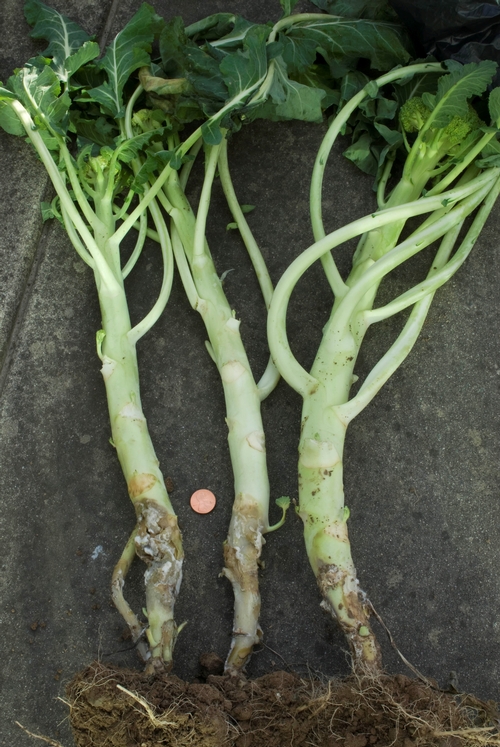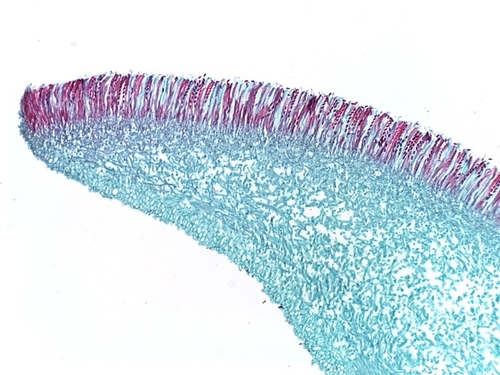White mold disease, caused by the fungus Sclerotinia sclerotiorum, is causing damage to a number of vegetable crops in California and Arizona during the late 2010 and early 2011 months. On the coast of California, white mold is being found on crucifer crops such as broccoli and cauliflower. In the desert regions white mold is causing damage on broccoli, cauliflower, celery, lettuce, and other vegetables (for lettuce this disease is commonly called lettuce drop). White mold incidence on these crops appears to be greater than normally observed. See photos 1 through 6 below.
The first symptoms on most vegetable crop hosts are small, irregularly shaped, water-soaked areas on stems, leaves, pods, or flower heads. These infections quickly develop into soft, watery, pale brown to gray rots. Rotted areas can expand rapidly and affect a large portion of the plant. Diseased tissues eventually are covered with white mycelium, white mycelial mounds that are immature sclerotia, and finally mature, hard, black sclerotia. Mature sclerotia usually form after tissues are rotting and breaking down. Plants with infections on the main stems can completely collapse and fall over.
The black sclerotium is the survival stage of the fungus and can measure from ¼ to ½ inch long. Sclerotia are found in the soil and can directly infect plants if stems are in close proximity. However, these winter cases of white mold are due to ascospore infections. If sufficient soil moisture is present, shallowly buried sclerotia germinate and form small, tan mushroom-like structures called apothecia (photos 7 and 8). Ascospores (photos 8 and 9) are released from apothecia and carried by winds to the host plant. These ascospores are responsible for these winter infections and result in disease of the above-ground parts of plants. The relatively cool, moist weather found in most regions has allowed for the production of apothecia production and ascospore releases.
For ascospores to start colonizing plant tissues, nutrients and plant fluids from damaged tissues are usually needed. This is why white mold is very severe if ascospores land on compromised tissues such as lettuce leaves with tip burn, leaves and heads damaged by frost or other factors, stems with open wounds or exposed leaf traces (vascular tissue in the stem that is left exposed when a lower leaf falls off), and senescent leaves and stems.
Controlling white mold under these winter weather conditions is difficult. Protective fungicides provide some assistance and can be used effectively in lettuce. However, such fungicides need to be applied prior to ascospore flights and usually will require multiple sprays. Fungicides may not be warranted for crucifer crops.
Steve Koike thanks Jeff Rollins and Karen Chamusco for assistance with photographs for this article.

Photo 1: White mold (lettuce drop) on romaine lettuce.

Photo 2: White mold (lettuce drop) on romaine lettuce, showing white mycelium and two black sclerotia.

Photo 3: White mold on broccoli stems.

Photo 4: White mold on broccoli stem, showing white mycelium and one black sclerotium (center).

Photo 5: White mold on cauliflower head, showing white mycelium.

Photo 6:White mold on celery, showing numerous black sclerotia.

Photo 7: One sclerotium and several apothecia (spore producing structures) of Sclerotinia sclerotiorum.

Photo 8: Microscopic view of the spore-producing apothecium of Sclerotinia sclerotiorum. Note the lined-up ascospores (red) ready to be released. Photo used by permission (K. Chamusco).

Photo 9: Microscopic view of ascospores lined-up in a tube (called an ascus) and ready to be released. Photo used by permission (J. Rollins).